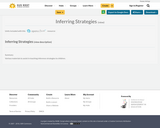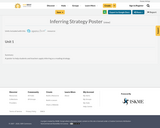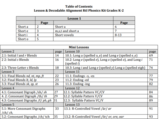
"This page pulls together lots of tools and resources to help you get the most out of Microsoft's inclusive tools for the classroom."
- Subject:
- Education
- Material Type:
- Primary Source
- Author:
- Microsoft
- Date Added:
- 09/09/2019

"This page pulls together lots of tools and resources to help you get the most out of Microsoft's inclusive tools for the classroom."

Angel Arrellano, a nine-year-old girl from Fresno, CA. spearheaded a campaign to raise money to be donated to the local zoo. Her enthusiasm and altruism generated an overwhelming response from the Fresno community and beyond, which allowed for much needed upkeep and improvements for the zoo and its animals.

This nonfiction piece tells about Barbara del Colorado, a village in Costa Rica. People needed a way to make money; a scientist suggested that they grow butterflies. The town now sells 250 pupae a month, making enough money to buy what they need.

ŕHottest, Coldest, Highest, DeepestĚŇ takes the reader on a journey around the world to various continents found on Earth that contain unique natural features.

ŕHow Animals TalkĚŇ is an informational, nonfiction selection describing how various animals communicate or send messages. Animals communicate with each other to warn of danger, to share feelings, to attract a mate, and even prove dominance.

A great professional development video introducing a mini-lesson on teaching comprehension.

Cognitive psychology and neuroscience have begun to dissect the neuronal mechanisms of literacy using brain-imaging techniques. During reading acquisition, our brain circuitry recycles several of its pre-existing visual and auditory areas in order to reorient them to the processing of letters and phonemes. The nature of this "neuronal recycling" process helps explain many of the children's difficulties in learning to read. Our growing understanding of the child's brain has important consequences for how education should be optimally organized.
Understanding how the brain learns to read can help us all be more effective in teaching students to read.

Learn how to take a running record on any book!

During the 2019-2020 Professional Learning Communities in Sun West, the Early Learning/Phonological Awareness PLC created this recourse to help Teachers in their ELA programming with an overview of learning to read.
This continuum may also be helpful to parents, Educational Assistants, and other people in a student's educational team!

During the 2019-2020 Professional Learning Communities in Sun West, the Early Learning/Phonological Awareness PLC created this recourse to help Teachers in their ELA programming with an overview of learning to read.This continuum may also be helpful to parents, Educational Assistants, and other people in a student's educational team!Find the resource and a short webinar on how to use the resource here.

Students learn the patterns in the hundred board by assembling puzzles. Teachers are able to assess student use of patterns in rows and columns by observing the student at work. This task is easily differentiated to accommodate the varied levels in a first grade class by changing the number of pieces and the shape of the pieces. Puzzle bags should be sequentially lettered so that students progress through harder versions of the task. Finally, students are asked to create their own puzzles for classmates to solve.

To fully explore theme, students must understand what they read and then extract ideas from the text. Here are 11 tips to help your students understand theme as they read.

This text explains the nuts and bolts of how different types of coins, bills, and checks; how they are connected; and how your dollars can earn money through the bank.

Graphic organizers and worksheets that help K-12 students with their inferencing skills. Inferencing is an important for understanding text as often times authors imply themes and ideas.

Various materials to assist in teaching inference strategies to children.

A poster to help students and teachers apply inferring as a reading strategy.

You're in a movie theater, watching the new horror flick. The audience knows something that the main character does not. The audience sees the character's actions are not in his best interest. What's that feeling -- the one that makes you want to shout at the screen? Christopher Warner identifies this storytelling device as dramatic irony.

Modelled Reading
Shared Reading
Scaffolded/Guided Reading
Independent Reading
These are all examined with the transfer of responsibility. This document should form the basis of a good reading program. All types of lessons must be included.

A scope and sequence is included. 25 lessons are provided with a structure that includes: pre-reading, first read, second/third read, comprehension check, fluency check.

These charts will allow you to easily compare and integrate different Structured Literacy resources. The charts align UFLI and RazPlus, QPS, Phoneme & Grapheme Mapping Book, Silver Moon, SPIRE and Natlie Lynn Readers.